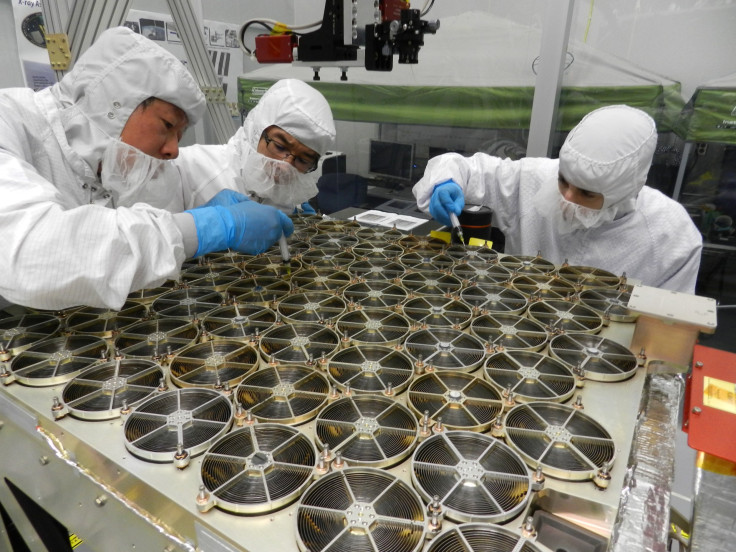ISS Will Study Neutron Stars After SpaceX June 1 Cargo Mission For NASA

Of all the strange and mysterious things in space that us humans and our machines can observe, few come close to neutron stars when it comes to flummoxing scientists. But a new scientific instrument being sent to the International Space Station (ISS) may provide information that will help us solve some of the neutron star’s riddles.
When SpaceX launches its eleventh cargo mission to ISS for NASA — using a Falcon 9 rocket June 1 — it will include an instrument called Neutron Star Interior Composition Explorer (NICER), the first NASA mission dedicated to the study of neutron stars. It will be installed aboard the space station, from where it will observe both regular neutron stars as well as pulsars.

Neutron stars are similar, in some ways, to black holes. Both are incredibly dense and form when stars collapse. However, stars that turn into black holes are over 20 times the mass of the sun, or thereabouts, compared to neutron stars, which start out as stars with between seven and 20 solar masses. And while neutron stars are not as dense as black holes, they are still the second-densest objects known to us. A teaspoon of neutron star matter, if brought to Earth, would weigh about one billion tons.
Read: Neutron Star Provides First Observational Evidence Of ‘Vacuum Birefringence’ In Empty Space
“If you took Mount Everest and squeezed it into something like a sugar cube, that’s the kind of density we’re talking about,” Keith Gendreau, the principal investigator for NICER at NASA’s Goddard Space Flight Center in Greenbelt, Maryland, said in a statement Friday.
Since we can’t observe what happens beyond the event horizon of a black hole, understanding how matter works inside neutron stars will provide scientists with knowledge of how matter behaves in conditions of extreme pressure and density that exists within black holes as well. And these are not conditions that can be artificially created in a laboratory on Earth.
Pulsars are rapidly rotating neutron stars, spinning up to hundreds of times per minute. They are also surrounded in extremely strong magnetic fields which are trillions of times stronger than that on Earth. These two properties — fast rotation and extreme magnetism — accelerates particles to speeds approaching almost that of light. When some of those particles fall on the pulsar’s magnetic poles, a large amount of heat is generated, visible in X-ray as brightly glowing hot-spots.
The gravity of neutron stars, akin to that of black holes, is very intense and warps space-time. This warping distorts the view of the star’s surface and the hot spots on it. By measuring the changes in the brightness related to the distortion, caused by the spinning of the neutron star, NICER will be able to determine the pulsar’s radius.
Goddard’s Zaven Arzoumanian, NICER deputy principal investigator and science lead, said in the statement: “Neutron stars represent a natural density limit for stable matter that you can’t exceed without becoming a black hole. We don’t know what happens to matter near this maximum density. … NICER is designed to see the X-ray emission from those hot spots. As the spots sweep toward us, we see more intensity as they move into our sightline and less as they move out, brightening and dimming hundreds of times each second. … Once we have a measure of the mass and radius, we can tie those results directly into the nuclear physics of what goes on when you compress so much mass into such a small volume.”
Another problem NICER could help solve concerns the critical mass at which a star can turn into a black hole. In cases of binary systems, when a neutron star orbits another star, the former often pulls material off the latter and gains mass. Understanding the critical threshold when the mass is enough for the star to turn into a black hole will allow us to predict the number of black holes and neutron stars in the universe.
© Copyright IBTimes 2024. All rights reserved.





















